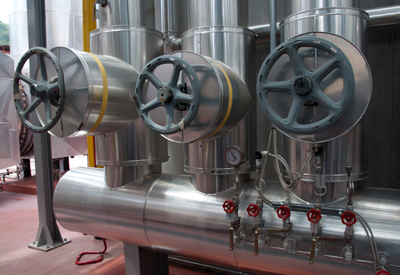Water Use in Pulp & Paper Mills
 Manufacturing pulp and paper requires a substantial amount of water. The US benchmark for water use within pulp and paper mills is approximately 17,000 gallons/ton of paper, with one of the most efficient kraft pulp and paper mills only using 4,500 gallons/ton. With an effective safe-all system that incorporates restrictive water circuits, a mill can minimize both the need for incoming make-up freshwater and the release of effluent. In order to maintain closed water circuits, the mill must evaluate the concentrations of non-process elements (NPEs) that can accumulate within the facility. Some issues to explore before implementing a water reduction plan are:
Manufacturing pulp and paper requires a substantial amount of water. The US benchmark for water use within pulp and paper mills is approximately 17,000 gallons/ton of paper, with one of the most efficient kraft pulp and paper mills only using 4,500 gallons/ton. With an effective safe-all system that incorporates restrictive water circuits, a mill can minimize both the need for incoming make-up freshwater and the release of effluent. In order to maintain closed water circuits, the mill must evaluate the concentrations of non-process elements (NPEs) that can accumulate within the facility. Some issues to explore before implementing a water reduction plan are:
- Black-liquor recovery boiler scale due to increased potassium and calcium salt concentrations
- Corrosion build-up due to increased chloride concentrations
- Chemical use to address scale
- Water temperatures increasing
- Biological entrainment in whitewater streams and cooling towers.
Several mills have successfully demonstrated water reuse in its bleaching stages by establishing counter-current flows when they have incorporated non-chloride bleaching stages. Since the bleach plant is the single largest consumer of water within pulp mills, focusing on the recycling and efficacy of water within the bleaching sequence can significantly reduce water use within the mill. One such example is a pulp and paper mill in Canton, North Carolina, that has reduced water use by over 40% since 1990 through an ion-exchange within its bleaching system.
Resource
- MnTAP Intern Summary: Stora Enso Duluth Paper Mill (2002). By implementing a MnTAP intern’s recommendations, the paper mill reused water from the press section of the paper machine and saved over $700,000.
- General Water Conservation